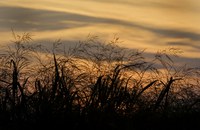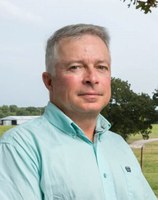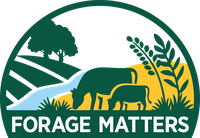Forage Matters: ‘Lay-by’ time
(Click an image below to view a high-resolution image that can be downloaded)
When I grew up, we still did a lot of weed control of our row crops with cultivation. I spent a lot of hot summer days watching soybeans flow between the row spacings of a cultivator. Once the crop's canopy had closed, we were done with cultivation for the year, and we were just waiting for the crop to mature and harvest. This was “lay-by” time — the spring planting push had eased up, and we could then move on to other things and maybe just take a breath and regroup.
This did not mean we were ignoring the crop and hanging around waiting for harvest. We shifted more into monitoring, keeping an eye on crops for weeds, insects, disease and moisture. Watching our hay fields to gauge when our next cutting would take place. Keeping an eye on cattle out on pasture. All of this was done during “lay-by” time.
Monitoring is an essential and often overlooked part of pasture, range and forage management. There are two parts to monitoring. The first part is things that you monitor several times within a year. The second is things that you might monitor a few times within a year, but repeat over time in order to determine a trend.
Monitored several times per year
The weather is monitored almost daily. Taking a look at the latest U.S. Drought Monitor map for North Dakota, the northeast and western parts of the state are abnormally dry or in moderate drought conditions. Cattle producers in these areas should be closely monitoring forage availability, cattle body condition and water resources. Also, the U.S. Seasonal Drought Outlook provides an outlook on how large-scale trends are developing for drought tendency. Both of these tools can be used to help anticipate how forage availability will change through the summer months and are available at droughtmonitor.unl.edu.
Doing a good job of monitoring forage availability or utilization is sometimes easier said than done. A grazing utilization stick is an easy way to keep track of pasture utilization or the amount of plant weight that has been removed by grazing. These utilization sticks were developed by and are available through North Dakota State University Extension. These grazing sticks provide information on the recommended plant height to begin and end grazing for key species. By measuring the heights of key species before and after grazing, a plant removal weight can be calculated. Ideally, proper utilization of a plant is achieved when 50% of the plant weight has been removed, not plant height. This utilization rate varies by plant species, and knowing plant species and utilization goals is extremely important when the goal is to maintain plant diversity within a landscape. These measurements can be used to adjust the stocking rate during the grazing season.
Much has been written on the importance of beef cattle body condition score (BCS) and production efficiency, and there are many guides available on what these scores look like. Monitoring BCS until weaning is a good idea, especially if dry weather conditions continue to develop and forage availability becomes limited. Monitor overall animal health as well and especially with bulls. Bulls with sore feet or that have lost significant body condition probably have little interest in servicing cows.
Summertime livestock water quality can be an issue as temperatures warm. Blue-green algae blooms can produce toxins that can be harmful to livestock, wildlife and people. If water sources are suspected to be contaminated, they can be tested. NDSU livestock water testing guidelines can be found at ndsu.ag/watertesting.
Monitored yearly and over time
Management results can be monitored within a year and over time to determine trends. All livestock production data, such as conception, birth and weaning rates, weaning weights and economic indicators, should be monitored over time.
On the pasture and range side of the equation, photo points are a neat way to monitor pasture and range conditions and document change over time. Learn what key plant species make up your forage base and are the backbone of your grazing operation, and monitor them over time. Are these key species increasing, decreasing or staying constant? How has the stocking rate changed over time? Has cow weight changed over the years, and has that had an influence on your stocking rate? Has carrying capacity changed over time?
Another important monitoring estimation is ground cover. Losses of ground cover can indicate change from a number of reasons, such as drought, stocking rates, grazing intensity and duration. Take a walk across a pasture and, after a predetermined number of steps, take a look at what you are standing on. Note the plant species present or bare ground. Keep track of the responses as you move across an area. If the area is too large to walk, ride across, then stop and take a look. Take the same route once or twice a year at the same time each year. This will give a good idea of how stable the plant population is over time.
I’m not sure there is a lay-by time anymore. Seems like there are always things that we can monitor and measure to make sure that we are staying on track. I remember one thing about cultivating soybeans on hot summer days in the field: when someone brought me a quart Mason jar of iced tea, it sure tasted good.
NDSU Agriculture Communication – July 3, 2025
Source: James Rogers, 701-857-7682, james.rogers1@ndsu.edu
Editor: Dominic Erickson, 701-231-5546, dominic.erickson@ndsu.edu




